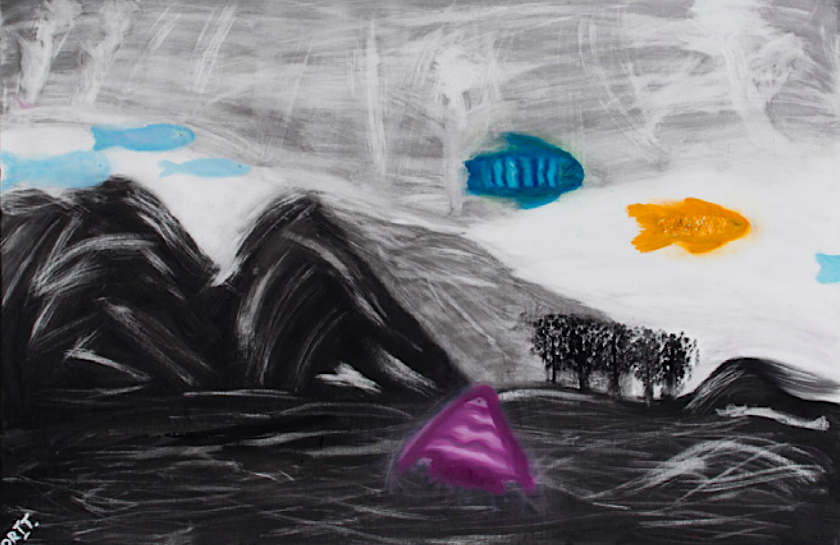“I just want to let it be…”
Paul Zimmerman in conversation with Orit Sharbat
Paul Zimmerman: How did you develop interest in art?
Orit Sharbat: I grew up in a house full of culture. My parents put a strong emphasis on education and extra-curricular activities, encouraging me to play piano, dance ballet and listen to classical music. My mom used to paint in addition to my sisters, so the world of art was never really foreign to me, meaning this journey has been a natural continuation of my childhood and how I grew up.
PZ: You paint landscapes, figures, abstractions. How do you select your subjects?
OS: I choose a subject according to a feeling I have brought on by a vision through my imagination. Then, I just spread it on the canvas, giving it air, water, life and a space to move.
PZ:What is your artistic process? How do you create your paintings?
OS: My creative process begins with a strong preference to a particular look, color or texture. Then I spread the canvas, throwing colors on it that I feel that need to be there. After that, I listen to what I see on the canvas and I observe the tempo and movement that is revealed as a result of the journey taken toward this creation. It’s a very meditative process that has a lot to do with attentiveness, freedom and movement. I don’t want to interrupt the pace that is created, instead I just want to let it be.
PZ: Do you have any particular goal in mind when your start a new piece?
OS: The only goal that I have in my head is to let the painting create itself. I believe that to paint is to create and when you create there is something in the creation process that is not passive, but active.
PZ: How do you know when the painting is finished?
OS: I know that the painting is finished when I feel silence and stillness in my hear. During the creation process there are deep feelings that come out of both my conscious and subconscious mind. They flow directly from my gut and my heart. After all of them are done expressing themselves I feel completeness, calm and quiet and that’s the moment I know it’s time to stop painting.

PZ: Has your practice changed over time?
OS: Of course I have experienced changes through time, as with every piece I am able to discover another way and uncover some hidden beauty that was waiting to be revealed. To find it, is like opening a closed door, only to find another door and then arriving at another door after it. It’s an endless and exciting process to find each door that opens one after another. That’s the process of creation, just opening doors of creativity.
PZ: Which artists are you most influenced by?
OS: The artists who influenced me the most are Vincent Van Gogh, Henri Matisse, Claude Monet, Jackson Pollak and Andy Warhol
PZ: How would you define art?
OS: I define my art in a number of different ways. Its spiritual, mystical, pure, and naïve, which all represent the transformation process and the feeling you get while observing it.
PZ: What are you working on now?
OS: I’m working now on a new series of paintings that are acrylic on canvas, featuring abstracts and landscapes, but from different perspectives.
PZ: How does the pandemic influence your work and sensibility?
OS: The pandemic gave my work peace and calm and a place to grow. I’ve been through three lockdowns thus far. The first and second, I was paralyzed and couldn’t paint, but the third I wasn’t in Israel and everything just burst out of me like water flowing out of a flood gate.
